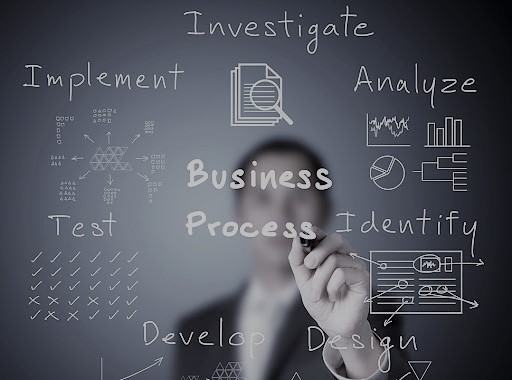Enterprise Architecture led Strategic Advisory
Services Category : Enterprise Architecture / Enterprise Architecture
0 (0)
Price on request
Somethings that are hygiene today, mentioned weekly on
Analysts Meets or in boardrooms, are the disruptions caused by Digital
Transformations.
These developments are putting pressure on enterprises to initiate Digital Transformation projects, to stay in the race. However, without the intrinsic focus on the changes needed to the underlying Enterprise Architectures, such initiatives see short term gains, but a near 100% mortality.
As stated by John A. Zachman, father of the modern Enterprise Architecture, lack of a structured approach to EA a.k.a. an Alchemist like orientation, directly impacts organizational longevity.
At Vivikta, we bring forth methodologies that have been used to modernise across business sectors. These methodologies have resulted in a set of outcomes represented by,
Businesses that were once considered invincible are now either targets for acquisition or have just perished.
- Mobility driven gigabit data on 5G networks. This development will make many businesses leverage the power of Virtual Reality / Augmented Reality to deliver a transformed business process. This has seen many sectors transform by adoption of sensor-based process management and exception handling. Some significant applicability is seen in the Retail and Manufacturing sectors, Field Servicing across sectors and in implementations of Smart Cities and Homes.
- Wider adoption of the trustless, pseudonymous, decentralized and immutable characteristics of the Blockchain and the aligned cryptocurrencies to enable secure business transactions at a fraction of the current costs. Businesses with deep reliance on the Ecosystem to deliver value to the Consumers or for large Capital Projects with stringent SLA based performance guarantees, Blockchain is a way to trace and track the antecedents and outcomes. The need for eHealth services buoyed by the pandemic has also seen an integral adoption of blockchain.
- Continuously improving accuracy of pattern recognition techniques and actionable insights. These are based on fast improving and easily accessible neural networks, deep learning, and artificial intelligence capabilities globally. This is enabling many business applications that were thus far considered unreliable. Sectors that are being transformed include, Banking & Financial services, Insurance, Pharma and Lifesciences, Healthcare and Services. These techniques are making fraud detection easier, costs of a new molecular entity lower and enabling more predictable health outcomes.
- Robotics process automation delivered in the form of virtual assistants / digital workers that significantly drive down costs while ensuring Six Sigma level performance for repetitive tasks. Largely focussed on bottom-line improvements, these conversational assistants and process automation techniques are directly impacting Run Costs by >40%.
- Establishing the world’s first fully integrated Health and Wellness Platform offering services to a target population of >450 Million. The Platform Architecture has received the prestigious ICMG Best Architecture for a Software Product from John A. Zachman – New York, November 2019
- Establishing an Integration Framework with some of the largest Third-Party Administrators (TPAs) in India for real time preauthorization and domiciliary insurance eClaims processing
- Creation of a SmartContract Platform for clinical consumables procurement connecting the Supplier / OEM with the Provider (Hospital / Physician) addressing 30% of the operational costs for a Provider
- Modernization blueprint for a large discreet manufacturer in Australia, including manufacturing planning automation and integration with the Sales for Just in Time production
- Business Capability Mapping and Future State design for a US based Machine Learning platform that optimises Job Listing on Google for Jobs
Our services in Enterprise Architecture include,
- Current State EA Maturity Assessment for the existing Enterprise Architecture and developing a roadmap for improvement. The approach leverages TOGAF approach for architecture development and COBIT for architecture governance. The differentiator being, the Primary Elements (Entity) based approach to identify foundational strengths and areas for improvement.
- Change Impact Analysis on the Enterprise Architecture for enabling Digital Transformation, with services including,
- Business Architecture Change
- Application Architecture Change, including application rationalization
- Data Architecture Change, including facets for leveraging data architecture to derive business insights
- Technology Architecture Change, including product selection
- Integration Architecture, especially with the peripheral entities (Ecosystem and Devices)
- New Product envisioning and design including,
- Business Entity definition (Business Process Definition and Entity Identification) and reconciliation
- Business Component Architecture, as depicted in Figure 3 for a Procurement aggregator
- Information Architecture
- Modules and Feature Definition
- Build vs. Buy analysis
- Implementation Planning
- Establishing Architecture Governance including,
- Architecture Development
- Integration
- Migration
- Business and IT Strategy Alignment
- Enterprise (or Segment, or Capability) level business visioning (baseline for an existing architecture or target for a new architecture)
- Deriving the expected (target) business capability
- Business Capability to IT Capability mapping
- Gap Analysis and areas for improvement
- Alignment Audits
Enterprise Architecture Consulting Framework
For the Enterprise Architecture advisory, we leverage the TOGAF™ (The Open Group Architecture Framework) Architecture Development Model and the Zachman’s EA Model for the elaboration and design of Business Capabilities and the aligned Business Architecture, in conjunction with the COBIT 5.0 – for Governance, Risk and Compliance. We have, based on our experiences, developed an aligned framework as depicted in the Figure 1 that enable us to:
- Establish a best-practice based approach for conducting an As-Is analysis when approaching an Enterprise Architecture engagement, while focusing on the aligned business services and their measurable KPIs,
- Leverage our Domain Knowledge, to create Business Value Stream mapping to establish the impact of Non-Value Adding (yet mandatory) business processes on the business services and their measurable KPIs,
- Establish an improvement approach that may leverage Digital Transformation or Business Process improvements to ensure achievement of the KPIs,
- Leverage the governance approach that is stakeholder centric (Investors/Sponsor, Ecosystem, Employee and Customer) and resource (Hard Asset, Soft Asset, People and Finance / Investment) driven, thus, removing subjectivity and establishing the foundations for a measurable, predictable, scalable, secure and risk managed outcomes.
- Establish a continual improvement approach of Plan-Do-Check-Act with an added dimension of Showcase or achievement of the targeted KPI with an intent to establish a repeatable approach. This last dimension established an equivalent of a Control Center which, based on a stakeholder type, can surface the achievement of such improvements undertaken and their outcomes aligned to the business services KPIs.
The Enterprise Architects leverage this framework to deliver the services,
- Conduct of an Enterprise Architecture maturity assessment and establish an improvement roadmap. This assessment would be conducted in reference to the Framework outlined above
- Working alongside our client’s Strategic Team to develop several architecture products with appropriate processes, service ownership, governance structures and workflows across the varied and numerous business services that the Enterprise Technology Servicesprovides
- Create the Architecture Continuum (Foundations Common Systems Industry Architecture Organization specific architecture) and the derived Business Services Solution Architectures
- Create the Business Services Framework with details of services to be provided to each stakeholder class - IEEC
- (I) Investor / Sponsor – Framework for Utilization of Funds, Financial Dashboards, Investment and Costs Management to name a few,
- (E) Ecosystem – Frameworks for establishment of SmartContracts, Relationship Performance Management, Service Quality, Finance Management, Information Exchange and care coordination to name a few,
- (E) Employees – driven on the Capability Management design, establishing the Framework for organization design, performance management, rewards & recognition, retention and training and development to name a few, and,
- (C) Customers – driven on the key Customer Satisfaction targets, establishing the Framework for Patient Lifecycle Management with a focus on Care Continuum, Patient Engagement, Financial & Cost Management, Information privacy and portability, Information Exchange, and Billing Services to name a few.
- Ensure alignment with regulatory requirements,
- Establish the Value Stream Mapping for deriving the Enterprise Process Models and identify opportunities for business services improvement and leverage the QFD (Quality Function Deployment) for prioritizing such initiatives
- Identify approaches to implement such improvements and develop the To-Be System Design including, Business Process improvements, if any in collaboration with the Enterprise Technology Services teams
- Conduct an Application Rationalization exercise and establish an Application Portfolio Management framework to achieve the improvements
- Design and establish and Portfolio, Program and Project management framework to enable outcome focused governance and control
- Leverage the Business Impact Analysis approach (derived from the Failure Mode Effect Analysis Framework) and derive the Risk Score based on Severity of Impact, Occurrence, Detection ability to arrive at the Risk Priority Number (RPN)
- Design and help implement a Continuous Integration / Continuous Deployment framework using agile / Scaled Agile approaches
- Design and help implement Risk Management approaches and frameworks for the business services addressing, security, information exchange, regulatory compliance, and business continuity / disaster recovery
- Leverage the Incident Management best practices to develop, verify the efficacy of the Incident Response Plan, and develop the aligned playbook to Restore, Respond, and Prevent reoccurrence
- Assist and evaluating and implementation design for data sharing and interoperability leveraging the best practices from universally established interchange protocols
-
Brand name : Vivikta Advisory & Creatives



